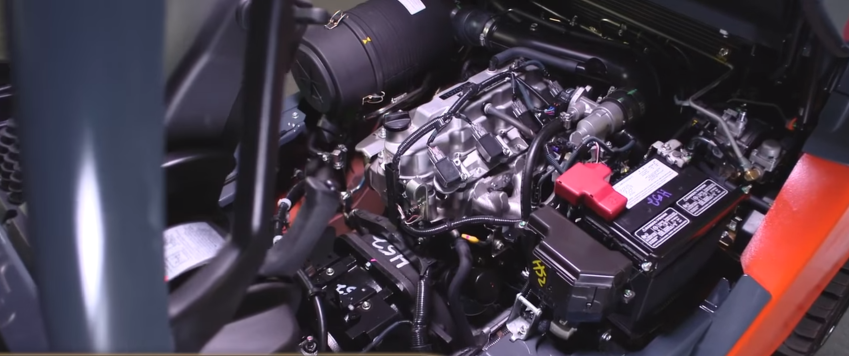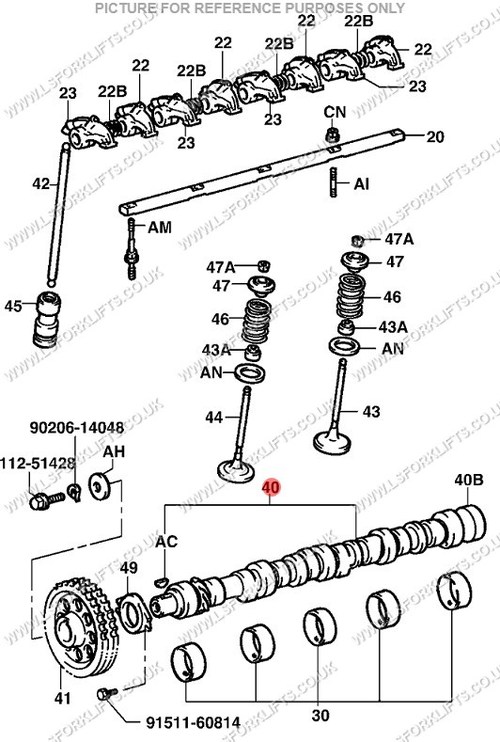The History and Evolution of the 4Y Engine in Automotive Engineering
The History and Evolution of the 4Y Engine in Automotive Engineering
Blog Article
Why the Engine Is the very best Choice for Performance and Efficiency in Your Vehicle
The engine remains an essential part in vehicle style, mainly due to its considerable impact on both performance and performance. As innovations in modern technology allow smaller engines to deliver exceptional power while optimizing gas economic climate, the integration of attributes such as turbocharging and crossbreed systems becomes progressively crucial.
Understanding Engine Kind
Understanding the numerous kinds of engines is crucial for maximizing performance and efficiency in automobile design. The primary engine kinds consist of interior burning engines (ICE), electric engines, and hybrid systems, each offering distinct advantages and limitations.
Interior combustion engines, which can be further categorized right into gasoline and diesel versions, count on the combustion of gas to produce power. Gas engines generally offer greater RPMs and much better velocity, while diesel engines are understood for their torque and fuel effectiveness, making them ideal for heavy-duty applications.
Electric engines, on the various other hand, make use of electrical motors powered by batteries or fuel cells. They offer rapid torque distribution, resulting in smooth acceleration and reduced exhausts. The efficiency of electric engines is substantially greater than that of ICEs, making them a preferred selection for eco-conscious customers.
Crossbreed systems integrate both internal combustion and electric engines, leveraging the staminas of both modern technologies. They maximize gas intake by using electric power at lower speeds and changing to gasoline or diesel for greater speeds or much heavier loads.
Choosing the best engine type is important for attaining desired performance metrics and ecological sustainability in modern-day automobile engineering.
The Influence of Engine Size
Engine dimension regularly plays a crucial function in establishing an automobile's efficiency and efficiency. Generally measured in litres or cubic centimeters, engine dimension straight influences the power outcome and torque features of a vehicle.
Nonetheless, raised engine size commonly associates with diminished gas effectiveness. Smaller sized engines can deliver adequate efficiency for daily driving while advertising much better performance, making them a preferred choice in compact and mid-size cars.
Furthermore, innovations in engine layout, such as turbocharging and direct gas shot, allow smaller engines to achieve power degrees similar to their bigger equivalents. This pattern stresses the significance of not entirely concentrating on engine size yet likewise considering general vehicle design and modern technology (4y engine). Eventually, the influence of engine dimension on performance and efficiency highlights the demand for customers to analyze their specific driving preferences and demands when choosing a car
Advanced Engine Technologies
Innovations in engine modern technologies have actually significantly reshaped the landscape of auto performance and efficiency, structure upon the foundational ideas developed by engine size. Especially, innovations such as turbocharging and direct fuel injection have actually made it possible for smaller sized engines to supply power levels formerly associated with bigger counterparts. Turbochargers compress air getting in the engine, enabling increased power output without a corresponding increase in engine size, while straight injection enhances gas distribution, enhancing combustion efficiency.
Additionally, variable valve timing systems have actually emerged as a critical modern technology, permitting engines to adjust valve procedure based upon driving problems. This flexibility improves both efficiency throughout acceleration and fuel performance throughout travelling. Hybrid and electrical engine technologies even more show the change in auto design, combining typical interior burning engines with electrical motors to maximize efficiency while minimizing emissions.
Moreover, improvements in products science have actually caused lighter, much more sturdy engine parts, even more boosting performance and long life. The integration of sophisticated electronics and engine control systems likewise enables real-time adjustments, guaranteeing optimal efficiency across numerous conditions. Jointly, these sophisticated engine innovations not only boost vehicle performance but additionally contribute to an extra lasting automotive future, demonstrating the continuous evolution of engine layout.
Harmonizing Power and Efficiency
Striking a balance between power and performance is vital in modern-day automotive style as producers seek to satisfy increasingly rigid exhausts guidelines while satisfying customer demand for efficiency (4y engine). The obstacle hinges on enhancing engine qualities to deliver durable power result without compromising gas economy
To attain this balance, designers employ various techniques, such as turbocharging, which improves engine power by forcing in more air, allowing for a smaller sized engine variation that boosts fuel check performance. Variable shutoff timing innovations also play a significant function, allowing engines to change their performance characteristics based on driving problems, consequently boosting both power and effectiveness.
Additionally, innovations in materials and making strategies have actually resulted in lighter engine components, which lower overall car weight and boost gas efficiency without compromising power. Crossbreed innovations have additionally emerged as a sensible remedy, integrating conventional interior combustion engines with electric powertrains to offer a boost in performance while keeping reduced exhausts.

Future Patterns in Engine Style

In addition, the growth of sophisticated products, such as light-weight composites and high-strength alloys, is readied to transform engine elements. These materials not only decrease weight but also improve thermal efficiency, thus optimizing efficiency. In addition, makers are exploring variable compression ratios, permitting engines to adapt to various driving conditions, enhancing both power output and gas economic situation.
Additionally, the increase of synthetic intelligence and artificial intelligence in engine design is enabling anticipating maintenance and real-time performance optimization. This modern technology can cause engines that self-adjust for maximum performance based upon driving patterns.

Conclusion
In verdict, the engine serves as a vital part in achieving optimum performance and efficiency in modern-day automobiles. The go to this website interaction in between engine size and style proceeds to develop, driving innovations that balance exciting efficiency with ecological sustainability.
Furthermore, innovations in engine layout, such as turbocharging and straight fuel injection, permit smaller engines to accomplish power degrees similar to their bigger equivalents.Innovations in engine technologies have significantly improved the landscape of vehicle performance and effectiveness, building upon the fundamental principles developed by engine dimension. Turbochargers compress air getting in the engine, allowing for enhanced power result without a matching boost in engine size, while direct injection optimizes fuel shipment, improving burning efficiency.
Crossbreed and electrical engine innovations additionally highlight the change in vehicle style, integrating typical inner combustion engines with electric motors to maximize efficiency while minimizing exhausts.
Jointly, these advanced engine technologies not just boost car performance yet also add to a much more lasting automobile future, showing the ongoing development of engine style. (4y engine)
Report this page